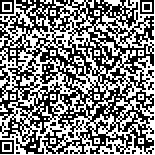本文已被:浏览 869次 下载 441次
投稿时间:2017-05-02 网络发布日期:2018-03-08
投稿时间:2017-05-02 网络发布日期:2018-03-08
中文摘要: 目的 比较抗缪勒氏管激素(AMH)及常规性激素在育龄期及围绝经期健康女性中水平,探讨不同性激素在女性不同年龄阶段的变化特点。方法 以2015年7月至9月于西安交通大学第二附属医院体检的健康成年女性75例为研究对象,分为25~39岁月经规律育龄期组(53例)及40~55岁月经不规律围绝经期组(22例)。应用罗氏全自动电化学发光仪测定血清中AMH、雌二醇(E2)、卵泡刺激素(FSH)及黄体生成素(LH)水平,比较两组AMH及E2、FSH、LH水平及其随年龄的变化规律及各激素之间的相关性。结果 育龄期组AMH及E2明显高于围绝经期组,而FSH及LH则低于围绝经期组(P均<0.05)。育龄期组AMH水平与年龄呈负相关(r =-0.590,P <0.01),而FSH、E2及LH与年龄无显著相关性(P均>0.05)。育龄期组FSH与AMH呈负相关(r =-0.311,P <0.05),E2及LH与AMH无显著相关性(P均>0.05)。绝经期组AMH与年龄仍成负相关,但相较40岁前女性,AMH随年龄下降幅度减缓,相关性较小(r =-0.432,P <0.05);FSH、LH水平逐渐上升,与年龄呈正相关(FSH:r =0.901,P <0.01;LH:r =0.835,P <0.01);E2水平逐渐下降,与年龄呈负相关(r =-0.548,P <0.01);FSH、E2及LH与年龄相关性均大于AMH。绝经期组女性中,FSH与AMH无显著相关性(P >0.05),E2与AMH呈正相关(r =0.611,P <0.01),LH与AMH呈负相关(r =-0.464,P <0.05)。结论 育龄期女性AMH与年龄呈明显相关性,在评价卵巢功能早期变化具有优势;而围绝经期女性FSH、E2及LH评价卵巢功能变化的敏感性则优于AMH。
Abstract:Objective To compare anti-Mullerian hormone (AMH) and routine sex hormones levels in healthy women at reproductive period and peri-menopausal period, explore the features of different sex hormones changes in women at different age stages. Methods A total of 75 healthy adult women of physical examination in Second Affiliated Hospital of Xi′an Jiaotong University from July 2015 to September were selected as research objects and were divided into reproductive period group with regular menstruation (aged 25 to 39 years, n=53) and peri-menopausal period group with irregular menstruation (aged 40 to 55 years, n=22). Roche fully-automatic electrochemical chemiluminescence instrument was used to detect serum AMH, estradiol(E2), follicle stimulating hormone(FSH)and luteinizing hormone(LH)levels. The levels of AMH, E2, FSH, LH and their regularity of change with age and the correlation among hormones were compared between two groups. Results In reproductive period group, AMH and E2 levels were significantly higher than those in peri-menopausal period group, while FSH and LH levels were significantly lower than those in peri-menopausal period group(all P<0.05). In reproductive period group, AMH level was negatively correlated with age (r=-0. 590, P<0.01), while FSH, E2 and LH levels were not significantly correlated with age(all P>0.05). In reproductive period group, AMH was negatively correlated with FSH(r=-0. 311, P<0.05)while not significantly correlated with E2 and LH(all P>0.05). In peri-menopausal period group, AMH was still significantly negative correlated with age(r=-0. 432,P<0.05), but decreased to lesser extent with the increase of age compared with women before 40 years. FSH and LH levels gradually increased and were positively correlated with age(FSH:r=0. 901, P<0.01; LH:r=0. 835, P<0.01); E2 level gradually decreased and was negatively correlated with age(r=-0. 548, P<0.01). The correlations of FSH, E2, LH with the age were greater than that of AMH. In peri-menopausal period group, AMH was not significantly correlated with FSH but positively correlated with E2(r=0. 611, P<0.01)and negatively correlated with LH(r=-0. 464, P<0.05). Conclusion AMH has an advantage for evaluating early changes of ovarian function, while FSH, E2 and LH have the advantages over AMH in the sensibility of evaluating ovarian function changes at peri-menopausal period women.
keywords: Anti-Mullerian hormone Sex hormone Reproductive period Peri-menopausal period Ovarian function
文章编号: 中图分类号:R711;Q579.1 文献标志码:A
基金项目:国家自然科学基金(31201118)
引用文本:
张杰,尉春艳,陈庆,等.育龄期与围绝经期女性抗缪勒氏管激素及常规性激素水平的比较[J].中国临床研究,2017,30(12):1600-1603.
张杰,尉春艳,陈庆,等.育龄期与围绝经期女性抗缪勒氏管激素及常规性激素水平的比较[J].中国临床研究,2017,30(12):1600-1603.
